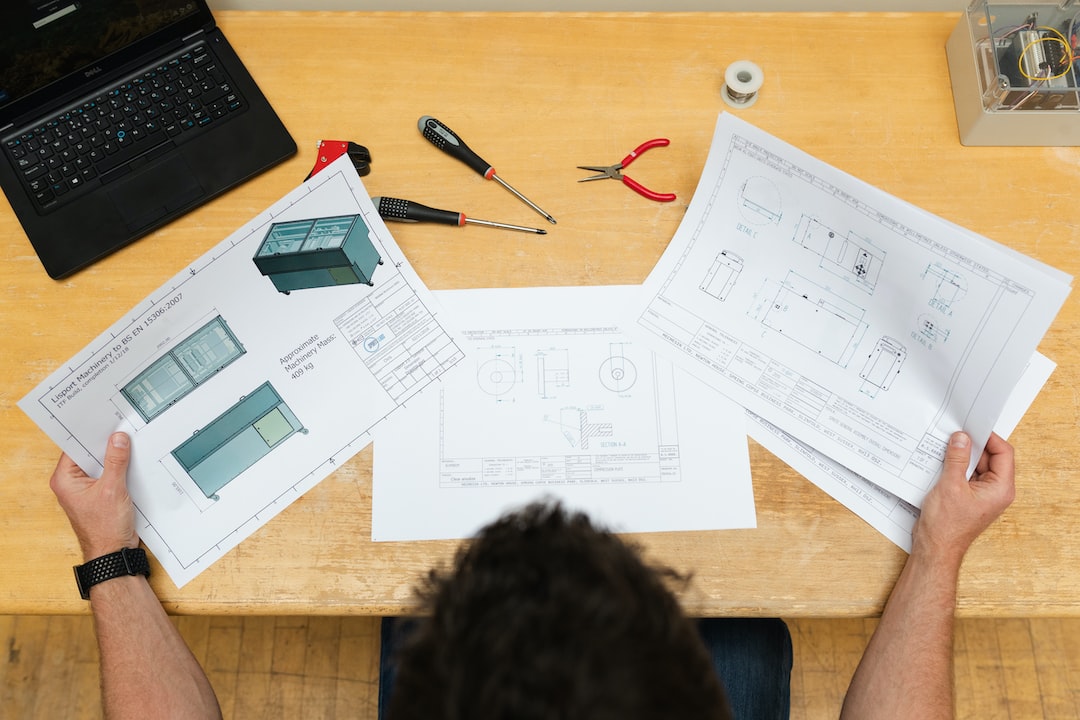Alright, fam, gather ’round because we’re about to dive deep into a topic that literally shapes our world in ways you might not even realize: engineering. Imagine waking up and all your tech devices, clean water, and transportation just stopped working. Wild, right? That’s the impact of engineering. From the all-nighters pulled by college students to the cutting-edge innovations that save lives, engineering is more than just a field; it’s the backbone of modern society. So, let’s get into it and understand why engineering is so dope! 🌍🚀
The Backbone of Infrastructure
Engineering is basically the wizard behind the curtain making sure our world runs smoothly. Think bridges, skyscrapers, and highways. These aren’t just random metal and concrete structures; they are masterpieces of civil engineering. Civil engineers plan, design, and oversee construction, turning blueprints into reality. Imagine driving across a bridge and not fearing it collapsing. Yeah, thank a civil engineer for that.
Reshaping Healthcare and Medicine
Next up, let’s talk about biomedical engineering. This isn’t just about creating tools; it’s about saving lives. Think prosthetic limbs, MRI machines, and even robotic surgeries. Biomedical engineers blend medical knowledge with engineering brilliance to innovate equipment that doctors use to diagnose and treat patients. For instance, the COVID-19 pandemic had engineers racing to design ventilators and PPE, while others worked on more efficient ways to produce vaccines. It’s a mind-blowing testament to how engineering can be a direct line to saving lives.
Technology and Gadgets Galore
We all love our gadgets—smartphones, laptops, drones, and gaming consoles. But behind every slick piece of tech is a team of electrical and computer engineers putting in work. They design and develop electronic systems that power our daily lives. Imagine your smartphone without its sleek touchscreen or lightning-fast processor. It’s these engineers who make that magic happen, ensuring that you’re always just a swipe away from the entire world.
Environmental Engineering: Saving the Planet
Then there’s environmental engineering, which is all about going green. 🌱 This sector focuses on developing solutions to protect our planet. With climate change and pollution becoming major issues, environmental engineers are crucial. They work on projects like waste management, recycling programs, and sustainable energy solutions like solar and wind power. These engineers are literally our planet’s superheroes, fighting to keep our environment safe and sustainable for future generations.
The Innovation Powerhouse: R&D Engineering
Imagine working in a lab where you get to invent new stuff that could potentially change the world. That’s what Research and Development (R&D) engineers do. They brainstorm, prototype, and test new ideas, technologies, and materials, constantly pushing the boundaries of what’s possible. Every piece of tech, new drug, or innovative gadget started in an R&D lab. These engineers are not just about solving today’s problems; they’re creating tomorrow’s solutions.
The Power Behind Renewable Energy
We can’t ignore the engineers hustling in the renewable energy sector. Fossil fuels are so old school, and renewable energy is where it’s at. Engineers are developing efficient ways to harness energy from natural resources like wind, solar, and geothermal power. They’re creating technologies that help reduce our carbon footprint and push us towards a more sustainable future. Think about massive wind turbines or sprawling solar farms—thank an engineer for those.
Transport and Mobility Revolution
Ever zoom down the highway in a sleek electric car or hop on a bullet train? Mechanical and automotive engineers make that possible. They’re revolutionizing how we think about travel and transportation. From designing fuel-efficient engines to developing autonomous vehicles, these engineers are crafting the future of mobility. Even companies like Tesla are leading the charge in creating sustainable, high-performance electric vehicles.
Cybersecurity: Guarding the Digital Realm 👾
With all of us glued to our screens, cybersecurity has never been more important. Cybersecurity engineers are the unsung heroes safeguarding our sensitive data from hackers and cyber threats. They’re developing high-tech security protocols and software solutions to protect our digital identities. Every time you log in to a secure site or make an online purchase without worrying about your info being stolen, a cybersecurity engineer has your back.
Manufacturing: The Backbone of Production
Manufacturing engineers play a key role in designing and overseeing the production processes for everything, from cars to consumer electronics. They ensure that manufacturing operations are efficient, cost-effective, and high quality. Think assembly lines and automation; without these engineers, production would be slow, expensive, and fraught with defects. They’re the ones keeping the wheels of commerce turning smoothly.
The Digital World of Software Engineering
Software engineering is like the oxygen of the digital age. These engineers write codes to develop software programs that run everything from your favorite apps to large-scale business solutions. They work in tandem with other engineers to create integrated systems. Whether it’s coding algorithms for AI or developing the latest social media platform, software engineers are at the forefront of the digital revolution.
Aerospace Engineering: Reaching for the Stars 🌌
Lastly, let’s not forget aerospace engineering, because who doesn’t think space is epic? These guys design and develop aircraft and spacecraft. From commercial planes that make global travel possible to rockets that explore the universe, aerospace engineers are pushing the boundaries of where we can go and what we can discover. Companies like SpaceX are working on missions to Mars, and it’s all thanks to the brilliance of aerospace engineers.
List of Modern Engineering Marvels
Alright, squad, time for a listicle. Here are some jaw-dropping engineering marvels that showcase just how sick engineering can be:
-
Burj Khalifa: The tallest building in the world, towering at 828 meters, located in Dubai. An architectural and engineering masterpiece made possible by advanced construction techniques and materials.
-
Large Hadron Collider: The world’s largest and most powerful particle collider, located in Switzerland. It’s a massive scientific achievement aimed at unlocking the mysteries of the universe.
-
Tesla Gigafactory: An enormous production facility for lithium-ion batteries in Nevada, U.S. Scaling up battery production dramatically to fuel electric vehicles and other tech.
-
Panama Canal Expansion: Engineering feat that doubled the capacity of the Panama Canal. This expansion enables larger ships to pass through, boosting global trade.
-
The Mars Rovers: Autonomous rovers exploring Mars, sending back invaluable data about the Red Planet. A collaboration of extraordinary aerospace engineering.
The Social Impact of Engineering
Engineering’s impact isn’t just about tech and gadgets; it’s profoundly social. Social engineering (not the hacker kind) involves creating solutions that improve the quality of life. Think about water purification systems in developing countries, infrastructure rebuilding in disaster-hit regions, and accessibility tools for people with disabilities. Engineers are applying their skills to create inclusive solutions that serve diverse populations, making life better for everyone.
Engineering Education: The Genesis of Innovation
It’s safe to say that all this engineering magic starts in the classroom. Schools and universities worldwide offer specialized programs designed to make the next generation of engineers. Institutions are incorporating hands-on learning, internships, and industry collaborations to ensure students are battle-ready for the challenges ahead. From coding bootcamps to advanced degree programs, education in engineering is evolving to meet modern demands, making sure that the field stays fresh and innovative.
Diversity in Engineering: More Voices, More Innovation
Here’s a hot take: diversity fuels innovation. Diverse engineering teams bring different perspectives that lead to groundbreaking solutions. Imagine a team from different backgrounds brainstorming a new product. The mix of experiences can lead to unique ideas that a homogenous team might miss. More voices mean more innovation, more creativity, and, ultimately, more effective solutions. Companies and educational institutions are working towards creating more inclusive environments to nurture this diversity.
Ethical Considerations in Engineering
With great power comes great responsibility. Engineers play a role in ensuring their innovations don’t harm society or the environment. Ethical considerations are paramount. Whether it’s developing AI that respects user privacy or creating sustainable materials, engineers must think critically about the impact of their work. Ethical engineering ensures that progress doesn’t come at the cost of people or the planet.
Engineers as Entrepreneurs: The Startup Culture
Gone are the days when engineers would strictly work for established companies. Today’s engineers are diving into the startup culture, launching their own ventures. From tech startups to biotech firms, engineers are leveraging their skills to create businesses that solve real-world problems. This entrepreneurial trend is driving significant innovation, giving birth to new products, services, and even industries. 🌟
Global Collaboration in Engineering
Engineering isn’t bound by borders. Engineering projects often require global collaboration, pulling together the best minds from around the world. For instance, international collaborations led to the development of the International Space Station (ISS), a marvel of aerospace engineering. Engineers share knowledge and resources to tackle global challenges, ensuring that progress benefits everyone. In a connected world, engineering is truly a global endeavor. 🌐
The Future of Engineering: What’s Next?
So, what’s popping in the future of engineering? We’re talking about AI, quantum computing, and space colonization. Fields like nanotechnology and genetic engineering are opening new frontiers. Imagine custom-built organs or nano-robots fighting cancer cells from within. It’s mind-blowing! Engineers are constantly pushing the limits, and the possibilities are endless. Stay tuned, because the best is yet to come.
Engineering in Popular Culture
Let’s keep it real; engineers are low-key the rock stars of modern pop culture. Shows like MythBusters, How It’s Made, and even The Big Bang Theory showcase engineering’s cool factor. These programs and movies like Iron Man put engineering under the spotlight, inspiring a new generation to appreciate the dazzling world of innovation and creativity it offers. Pop culture has given engineering a glow-up, making it a field that’s not just respected but also celebrated. ✨
The Role of Soft Skills in Engineering
It’s not all about hardcore technical skills; soft skills play a massive role too. Communication, teamwork, and problem-solving abilities are crucial. Engineers often work in teams and need to communicate complex ideas in a way that’s easy to understand. Leadership and project management are also vital. The best engineers are those who can balance technical expertise with strong soft skills.
Engineering Competitions and Hackathons
Yo, have you heard about engineering competitions and hackathons? These events are lit and offer a platform for aspiring engineers to showcase their skills. Think of it as a nerd’s Olympics. Teams collaborate on projects, often under tight deadlines, to develop innovative solutions for given challenges. Hackathons foster creativity, teamwork, and problem-solving—key elements for any budding engineer. Plus, they’re a great way to network and even snag some job offers!
The Intersection of Art and Engineering
The lines between art and engineering are blurring, and it’s beautiful. Products like the iPhone or Tesla’s Cybertruck are prime examples of how engineering meets design. Aesthetics matter, and engineers often collaborate with artists and designers to create functional yet visually stunning products. This fusion results in creations that are not just technologically advanced but also aesthetically pleasing. It’s all about that balance between form and function.
Human-Centered Design
Human-centered design is a big deal in engineering. It’s about designing products and solutions that prioritize the end-users’ needs and experiences. Engineers and designers work closely with users, gathering feedback and iterating designs to better serve them. This approach ensures that the final product is intuitive, functional, and genuinely helpful, making it more likely to succeed in the market.
The Role of AI in Engineering
Artificial Intelligence (AI) is the new frontier in engineering. AI is revolutionizing how engineers approach problem-solving and design. From predictive maintenance in manufacturing to smart algorithms in software development, AI is a game-changer. Engineers are using machine learning models to predict system failures, optimize designs, and even assist in complex decision-making processes. It’s like having a super-smart assistant by your side.
Engineering in Disaster Relief
When disasters strike, engineers are among the first to respond with solutions. Whether it’s designing temporary shelters, restoring power, or purifying water, they bring critical skills to the frontline. For instance, after major earthquakes or hurricanes, structural engineers assess building safety, and environmental engineers work on restoring clean water supplies. Their work can mean the difference between chaos and recovery, making them indispensable heroes during crises.
Agricultural Engineering: Feeding the Future
Agricultural engineers play a crucial role in addressing food security. They develop technologies to improve farming efficiency and yield. Think automated irrigation systems, smart tractors, and drones for crop monitoring. These innovations help farmers maximize resources and boost productivity, ensuring that as the global population grows, we have enough food to go around. 🥦🌽
The Growing Field of Space Engineering
Space engineering isn’t just about rockets and astronauts; it’s a rapidly expanding field exploring new frontiers. Satellites for global communication, space exploration missions, and even concepts like space tourism are on the horizon. Companies like SpaceX and Blue Origin are pushing the envelope, making space more accessible. Engineering advances in this field promise to open up new possibilities for human activities beyond Earth.
The Importance of Mentorship in Engineering
Mentorship can make all the difference for budding engineers. Experienced engineers provide guidance, share knowledge, and help navigate career paths. Mentorship programs in universities and companies help students and junior engineers connect with seasoned professionals. This relationship can inspire, motivate, and shape their careers, ensuring they have the support they need to succeed.
Robotics: The Future is Now
Robotics is one of the most exciting fields in engineering right now. Robots are being designed for everything from manufacturing to healthcare to space exploration. Think surgical robots that perform precise operations or robotic arms in factories assembling products with incredible accuracy. Advances in robotics are paving the way for a future where robots and humans work side by side, making tasks easier and more efficient.
The Impact of Open-Source Engineering
Open-source communities are transforming engineering. Engineers from around the world collaborate on projects, sharing code, designs, and ideas freely. This spirit of collaboration accelerates innovation and makes cutting-edge technologies accessible to more people. From open-source software platforms to hardware projects, this movement is democratizing engineering, allowing anyone with the skills and interest to contribute to global advancements.
Biomechanical Engineering: Enhancing Human lives
Biomechanical engineering focuses on solving problems related to biological systems. This includes designing prosthetics, implants, and wearable technology that improve lives. Imagine a prosthetic limb that moves like a real arm or an exoskeleton that helps people walk. This field combines biology, mechanics, and engineering to create solutions that enhance human abilities and improve quality of life.
The Role of Simulation in Engineering
Simulation technology is a game-changer for engineering. Engineers use simulations to model and test designs before building them. This is particularly useful in fields like aerospace and automotive engineering where prototype testing can be expensive and time-consuming. Simulation allows engineers to identify problems, optimize designs, and ensure safety, saving both time and resources.
Nanotechnology: Engineering at a Tiny Scale
Nanotechnology is engineering on a microscopic scale, and it’s opening up a world of possibilities. Nanotech is used in medicine for targeted drug delivery, in electronics for creating more powerful and efficient devices, and even in materials science for developing stronger and lighter materials. This field is still in its early stages, but its potential is enormous, promising to revolutionize many industries.
Engineering Ethics: A Global Perspective
Ethics in engineering is a global issue. Different countries face different challenges and have different ethical considerations. For instance, what might be considered sustainable in one part of the world might not be feasible in another due to economic or social factors. Global collaboration in engineering requires a nuanced understanding of these ethical issues, ensuring that solutions are not only innovative but also just and equitable.
Challenges Facing Modern Engineering
The field of engineering is not without its challenges. Rapid technological advancements mean that engineers need to continuously update their skills. There’s also the issue of resource scarcity, requiring engineers to find more sustainable ways to design and build. Furthermore, the complexity of modern projects demands collaboration across multiple engineering disciplines, making communication and teamwork more important than ever.
The Role of Governments in Engineering
Policy and regulation play crucial roles in the engineering sector. Governments around the world fund research and development projects, set safety and environmental standards, and create policies that encourage innovation. Engineers often work closely with policymakers to develop standards and regulations that protect the public and the environment while fostering technological advancements.
The Future of Work in Engineering
Work in engineering is evolving with the advent of remote work and digital tools. Virtual collaboration platforms, augmented reality, and cloud computing are making it possible for engineers to work from anywhere and collaborate in real-time. This flexibility is attracting more diverse talent to the field, making it more inclusive and innovative. The traditional office is becoming a thing of the past, and the future of work in engineering looks more dynamic than ever.
Engineering’s Role in Smart Cities
Smart cities are the future of urban living, and engineering is at the heart of this transformation. Engineers design the infrastructure that makes cities smart, from IoT-enabled traffic systems to energy-efficient buildings. These innovations improve the quality of life, reduce environmental impact, and make cities more sustainable. Smart cities are a testament to how engineering can create efficient, livable urban environments.
The Interdisciplinary Nature of Modern Engineering
Modern engineering is increasingly interdisciplinary, requiring knowledge in multiple fields. For example, developing a new medical device might require expertise in mechanical engineering, software development, and medical science. This interdisciplinary approach leads to more comprehensive solutions and innovations. Engineers must be versatile, continuously learning and adapting to new fields and technologies.
The Role of Engineering in Education
Engineering also




